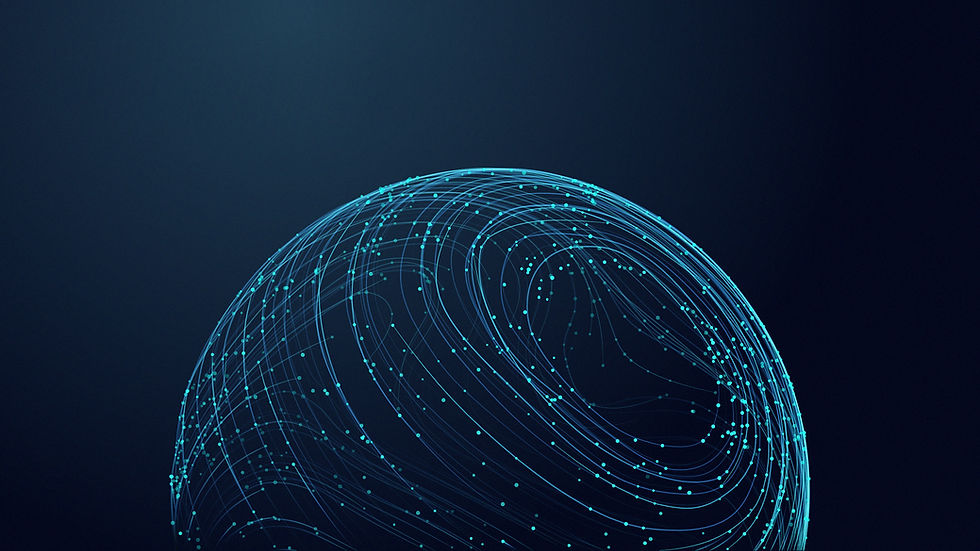Internet of Things
- Yael Lahman

- Mar 1, 2016
- 4 min read
Updated: Nov 28, 2024

An Internet of Things (or IOT) is a network of objects or "things", which enables advanced communication between these objects, information exchange and collection abilities. The IOT includes among others the fields of "the smart house" and "the smart city", as well as smart cars, smart electric network management, wearable devices (watches and shoes), device monitoring (security systems, heart transplants) etc. The IOT can refer to a wide variety of devices in different environments. The development of the IOT in the next few years is believed to lead to automatization of many areas of our lives. At this point its market is only taking its baby steps, but according to the Gartner Research Company, by the end of the year 2020, the number of devices connected to the internet around the globe will amount to approximately 26 billion. According to McKenzie Consultancy Company "the global net worth of the Internet of Things is expected to grow to 620 billion dollars by the year 2025".
So, how does the IOT work?
The objects or devices connected to the network communicate with people as well as with each other via sensors or micro chips with an antenna which enables the chip to communicate wirelessly with an external reader. Since microchips are (as their name suggests) tiny, it is very easy to connect them to almost any object and thus control it automatically from a distance.
What advantages does the IOT offer us users?
Firstly, it can enable us to control from afar the devices we utilize in our daily routines. We can activate the air conditioner or electric kettle before on our way home, turn the lights off even after we left the house, to activate and monitor an oven, etc. Secondly, the IOT assists us in managing effectively and efficiently both as individuals and as a society. Thus, for example, Samsung launched a smart refrigerator that can suggest recipes based on the ingredients currently in it and notify its owners when a product's expiration date has passed. The city of Chicago equipped its trash cans with sensors and the notifications they send (only) when they are full have decreased garbage truck traffic. The sensors on the traffic lights identify the pace of people crossing a crosswalk and extend or shorten the length of the traffic light accordingly.
The IOT can also assist us in saving lots of money. In "smart cities" such as Chicago and Barcelona, Millions of dollars have been saved due to street lighting (streetlights which adapt the lighting to the situation and weather) and water conserved due to implementation of smart systems. Similarly, connecting machines in industrial plants can optimize production and mainly prevent malfunctions and thus reduce the time they are disabled.
Another important advantage is our ability to monitor devices in different fields and collect information which wasn't available to us till now, to analyze it and produce new insights regarding the behavioral patterns and health state of people and animals, social patterns, product-creation processes, environmental conditions (pollution, traffic) etc. for example, Google's talking phone can communicate with a Smartphone and can collect data on the person wearing the shoes. Another interesting development in the field of medicine is an application which allows doctors to regularly follow chronically ill patients even when at home. Constant monitoring of heart rate, blood sugar level, and oxygen as well as other vitals can provide researchers with real time information regarding millions of patients and render a substantial portion of checkups irrelevant. Furthermore, regular monitoring can predict and possibly prevent dire occurrences such as strokes and heart attacks as well as improve the efficiency of medicine production by enabling optimal customization of medicine, specifically catered to the patient.
Challenges
Nevertheless, the IOT presents us with a number of complications; one of these is the matter of safety. The same available information collected by the aforementioned multiple sensors can be exploited by potential house-burglars or (worse) terror organizations. Our privacy and information security is viewed differently when the devices we use collect loads of information on us and our most private habits and can be delivered (without us knowing/agreeing) to the hands of different commercial industries. Another challenge is a result of the face that the sensors collect a vast amount of information which needs to be retained and analyzed for the purpose of making informed decisions. This objective requires the development of advanced information processing systems that can analyze Big Data in real time while comparing it to other information patterns and provide users with a quick answer.
The IOT presents knowledge managers, too, with new Challenges. The big amounts of information collected in all areas of life must be catalogued, sorted and analyzed. The data collection should be performed in real time and as quickly as possible and will require knowledge managers to prepare for handling a vast, quick stream of information. Nevertheless, the IOT can benefit the field of Knowledge Management. The volume of work required by Knowledge Managers will probably increase in correlation to its necessity: Knowledge Managers will be able to analyze a wider variety of information categories in areas yet to be researched. Furthermore, the decision making in different fields will increasingly rely on insights produced by analyzing the accumulated data. It is fair to assume that knowledge managers' analysis skills will only become more central.
In conclusion, it is evident that the IOT is not science fiction, rather a reality. It will proceed to affect various areas of our lives. We are rapidly advancing towards a world in which not only computers, tablets and Smartphones are connected to the internet; soon enough, all devices will be connected to one enormous network of information. All we can really offer is this: prepare for the revolution, both practically and mentally.
References:




Comments